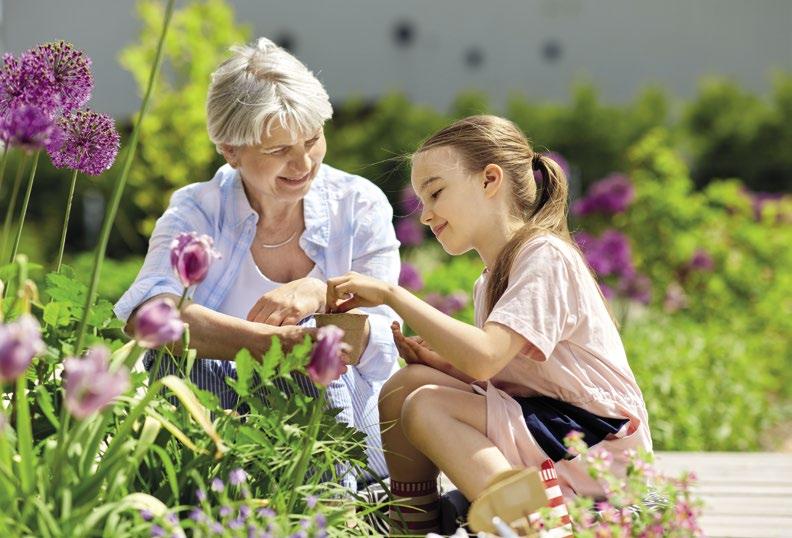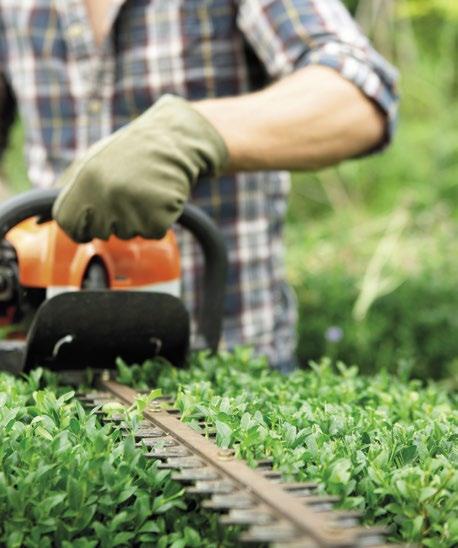
2 minute read
Sowing the seed for the next generation
With the summer holidays upon us, there is plenty of opportunity to ‘grow’ youngsters’ interests in gardens – and while it’s healthy to get the kids away from their tablets and iPhones every now and then, there are some bonuses to be had from the internet.
The web is full of fun things to do with little creatives that will nurture their love of flora, so you don’t need to spend hours trying to remember those episodes of Blue Peter you watched years ago for inspiration!
There are numerous simple projects you can help them with, and they are a great way to understand about plants, flowers and food.

Herb gardens offer variety, have a fab fragrance and kids can grow them and follow them into recipes and onto the plate. Make them fun by coming up with colourful, interesting ways to label the individual plants; perhaps by decorating lollipop sticks, or using toys, to name each herb.
Before popping those empty tin cans into the recycling, they could enjoy a second lease of life as miniature flower planters. Use a safe metal paint to transform the cans and with a little help from adults they can be attached to fences. In bloom, they will really elevate your outdoor space, and the pollinators will come and visit more often too. Remember to drill a draining hole in the bottom of each can and beware of any sharp edges.
Bigger planters will offer more choice, of course; take children to choose their own blooms from the array of affordable ranges that can be picked up at your local garden centre.
Seed collecting is another fun way to learn –kids will love finding them, and can then collect them up to use next year.
Even if you don’t have a garden of your own, you can still experience the beauty of nature on your doorstep – go and explore one of the local parks and the different wild flowers and trees growing there. Books or phone apps can help you identify flowers and leaves with ease.
I can still remember collecting Sweet Gum leaves for show and tell at school as a wee nipper!
The trees shed their beautiful star shaped leaves, and the colours were stunning shades of red and burgundy. Remember collecting conkers or picking up acorns or pine cones? It’s easy fun, but connects little people to nature.
When you’ve done the tree hunt, how about a bug hunt? An understanding of the insects living in our green spaces adds to the wonder of the outdoors, and making a bug hotel (we shared how to do that back in April’s edition) is a fab way to invite six-legged guests into your outdoor spaces.
Children will love the process of being little garden helpers, will learn an appreciation of all that exists beyond the screens, and lots of fresh air means they’ll sleep well too!
Some of the herbaceous perennials at the back of the border have put on their show and their flower stems have gone to seed. It is time to cut them down to their base, tidy and weed round them, work in some compost as a mulch and place young plants (raised in the cold frames or bought from a local nursery) in the gaps.
Hardy geraniums are always good to add to the border.
The box hedge at the back of the border is too tall and needs to be drastically trimmed, as do the topiary box balls, to regain their compact shapes.
I am continuing to deadhead the climbing and bush roses to promote late flowering and to clip back and rearrange the formation of a new framework for rambling roses to carry next year’s blooms.
May we enjoy a colourful autumn.
Ralph Westmoreland











